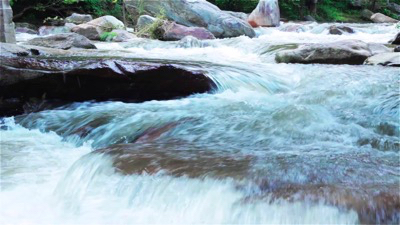 I opened yesterday’s post with the metaphor of a river in flow but with stable, or semi-stable elements. A river that can freeze over or dry up, which can be damed and navigated. That image works well for understanding a complex system which has propensities and dispositions. Propensities are aspects of the system which can be known and managed in various ways which then influence the overall dispositionality of the system as a whole. Hence the metaphor of the river with flows, dams, stones and snags.
I opened yesterday’s post with the metaphor of a river in flow but with stable, or semi-stable elements. A river that can freeze over or dry up, which can be damed and navigated. That image works well for understanding a complex system which has propensities and dispositions. Propensities are aspects of the system which can be known and managed in various ways which then influence the overall dispositionality of the system as a whole. Hence the metaphor of the river with flows, dams, stones and snags.
In working with complexity we need to create a method to flesh out the propensities to understand what we can (and cannot) manage. However the danger is any modern decision environment is the tendency to categorisation. So ABIDE is a perspective question, it builds on my earlier use of ASHEN to reveal knowledge, again without categorisation. ABIDE is a little more complex and the while the method has been in use for some years it is still under active development. I’ll describe my current sequence, but it is subject to change. It also needs work on simplification and examples and I am working on that; ideas welcome. There are similarities and differences with my previous post on this. ABIDE stands for Attractors, Boundaries, Identity, Differences/Dissent and Environment.
- Identify a disclosure point or points that provide sufficient context to allow people to answer in a concrete way, rather than through abstractions of platitudes. For knowledge we used decisions made. For situational assessment it is a little more difficult. The default is to simply to allow a description in a workshop setting. better is to use multiple micro-descriptions about the situation gathered from a diverse group of actors. Historical turning points in which systems shifted their nature are another option. Later this year we should be able to automate this from a journal based application of SenseMaker® and will be looking for beta sites in a few months time.
- Ask for the AB elements of ABIDE: attractors and boundaries. The way I describe this is to remind people that we bounce off boundaries and fall into attractors. We can create, modify or destroy boundaries but we can only catalyse attractors. To assist this we suggest different types of both. Attractors can be be like basins, everything ends up in the bottom. That is the simplest form, bit then we also have the option of an oscillation between stable states or an assemblage or strange attractor which in human systems often manifests as a trope. Boundaries can be rigid, elastic or permeable, the latter being the most resilient. I always remind people that this is a perspective question, a means of finding things in the system that you can manage so they shouldn’t get too hung up on the language. What matters is to describe things so people can talk about changing them without technical language.
- Identity mapping could be done through discussion in the same way but is best achieved by identifying the roles in play in the situation and then mapping the degree of importance of those roles in influencing the current dispositional state. Again we can do this in SenseMaker® and represent the results as a fitness landscape but conventional spider diagrams can also come into play. In some cases role may align with identity which makes it more stable and predictable. Culture mapping is another way of representing the identities for projects involving attitudes where management is inherently intangible.
- There are a lot of “D” words that can be used here. Dissent, Diversity, Difference and so on. The point relates to my various posts on scaling where the necessity of some gradient was established. If everyone feels the same nothing can change, if there is nothing but dissonance the same applies. In a healthy system there will be dissent, but not disabling dissent. Indirect disclosure methods using SenseMaker® are the best way of doing this, but we can also use MassSense to quickly provide a measure.
- As with all Mnemonics the final one is the catch all, covering all other things not provided for by the foregoing. This is more analytical and includes things like product life cycle, environmental factors, histories and so on.
OK that is it for now, more tomorrow

 I opened yesterday’s post with the metaphor of a river in flow but with stable, or semi-stable elements. A river that can freeze over or dry up, which can be damed and navigated. That image works well for understanding a complex system which has propensities and dispositions. Propensities are aspects of the system which can be known and managed in various ways which then influence the overall dispositionality of the system as a whole. Hence the metaphor of the river with flows, dams, stones and snags.
I opened yesterday’s post with the metaphor of a river in flow but with stable, or semi-stable elements. A river that can freeze over or dry up, which can be damed and navigated. That image works well for understanding a complex system which has propensities and dispositions. Propensities are aspects of the system which can be known and managed in various ways which then influence the overall dispositionality of the system as a whole. Hence the metaphor of the river with flows, dams, stones and snags.